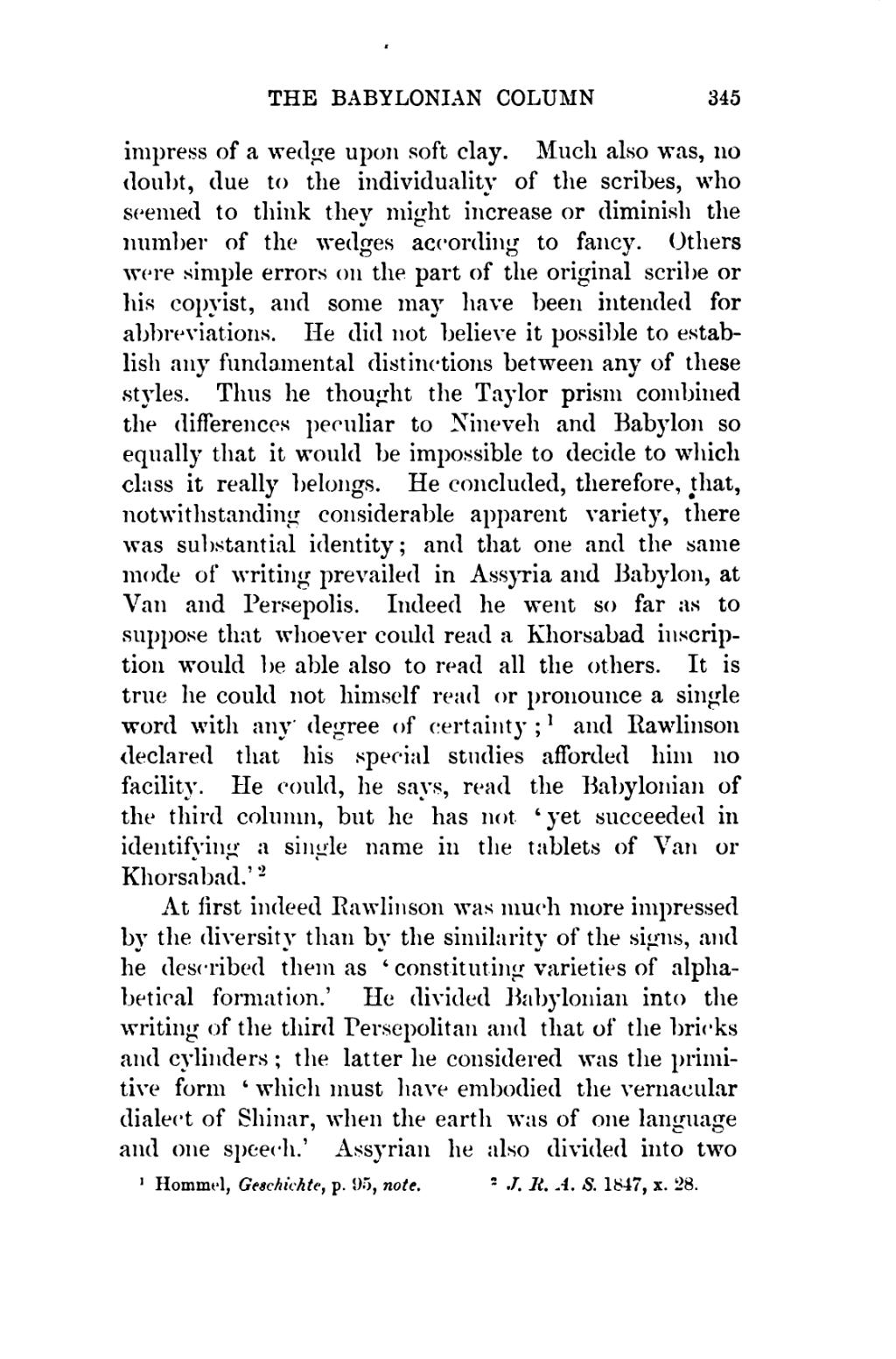impress of a wedge upon soft clay. Much also was, no doubt, due to the individuality of the scribes, who seemed to think they mi^ifht increase or diminish the nmnber of the wedges according to fancy. Others were simple errors on the part of the original scribe or his copyist, and some ma}^ have been intended for abbreviations. He did not believe it possible to estab- lish any fundamental distinctions between any of these .styles. Tlius he thought the Taylor prism combined the differences peculiar to Nineveh and Babylon so equally that it would be impossible to decide to which class it really belongs. He concluded, therefore, that, notwithstanding considerable apparent variety, there was sul)stantial identity ; and that one and the same mode of writhig prevailed in Assyria and Babylon, at Van and Persepolis. Indeed he went so far as to sup})ose that wlioever could read a Khorsabad inscrip- tion would be able also to read all the others. It is true he could not himself read or pronounce a single word with any degree of (certainty ; ^ and Rawlinson declared that his special studies afforded him no facility. He could, he says, read the Ba])ylonian of the third cohnnn, but he has not 'yet succeeded in identifvinu* a sinuie name in the tablets of Van or Khorsabad.' -
At iirst indeed Rawlinson was muc^h more impressed bv the diversitv than by the simihiritv of the sians, and he described them as ' constituting varieties of alpha- betical formation.' He divided J^abylonian into the writing of the third Persepolitan and that of the bricks and cylinders ; the latter he considered was the primi- tive form ' which must have embodied the vernacular dialect of Shinar, when the earth was of one laniruai^e and one si)eecli.' Assyrian he also divided into two
' Hommel, Geschuhte, p. J)5, note. - J. It, A. S. 1847, x. 28.
